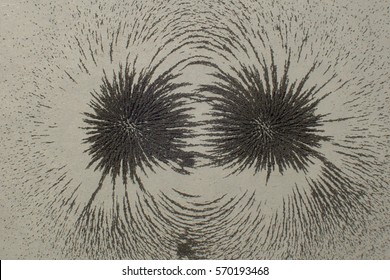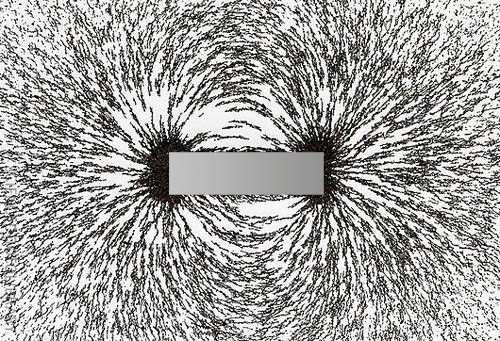Iron filings are small shavings of a ferromagnetic material. Ferromagnetic (for the purposes of this page, at least) means that they will align themselves with a magnetic field. That being the case, iron filings are an excellent way to display the magnetic field of one or multiple bar magnets. Just don't let the filings actually come into physical contact with the magnet or they will never come off. You can use a plotting compass or iron filings to detect a magnetic field: put a piece of paper over a magnet (this stops the iron filings sticking to the magnet) sprinkle iron filings onto the. Students can use the Sealed Iron Filings define a simple design problem that can be solved by applying scientific ideas about magnets. Students can do an activity with the Iron Filings with a Bar Magnet to analyze and interpret data from maps to describe patterns of Earth's features. Magnet and iron filings. This is the currently selected item. 3D magnet with field. Magnetic permeability. Increase strength of magnet. Measuring magnetic fields. Discovery of magnetic fields. Our mission is to provide a free, world-class education to anyone, anywhere.

Iron filings are, as their name suggests, filed pieces of iron that look like a metallic powder. Their properties are, in some aspects, similar to ferrofluid, because they form a significant pattern when interacting with a magnet. Magnetic fields are invisible, but the pattern that both substances form represents the lines of a magnetic field.
Pairing iron filings and magnets together is probably one of the most common, preliminary experiments used to show magnetism. Despite its commonality it is still an interesting way to display the magnetic field. Conduct your own experiment with iron filings and these simple steps!
- White paper
Alternatively, you can eliminate the risk of making a mess by using one of our magnetic demonstrators. If you want to go a step further with your lesson or want a neat desk or classroom display, we also have 3D magnetic demonstrators! The 3D version can be even more representative of the lines of force because they are inherently a 3D phenomenon, running vertical and horizontal as well as sideways.
- Place a piece of white paper on a flat surface.
- Pour some iron filings onto the center of the paper. Be careful when pouring them to avoid ingesting or breathing in powder from them. Also, leave enough space around the edges of the paper to allow you to pick it up without spilling its contents.
- Pick up the paper from the surface carefully. Take the magnet and place it between the paper and flat surface.
- You should see the iron filings spike up as the magnet nears the bottom of the paper. As you move the magnet around, the formation of the filings will change accordingly.
Here are a few questions to ask during and after the experiment:
Iron Filings Magnetic Sensory Bottle
What if the magnet strength was heightened? Would the pattern differ?
- The answer would be yes. Both the strength and shape of a magnet can affect the way the lines form.
Are magnetic fields visible with the naked eye?
Iron Filings Magnetic Field Lines

- No, however, we can view the directions that they run with this experiment. You can view this neat film on invisible fields from NASA and Semiconductor Films for a deeper look into their mysterious nature.

Iron Filings Magnet Toy
There are an assortment of experiments that you can do with iron filings and magnets to aid in teaching magnetism. We hope that you enjoyed this one! If you want to try a similar experiment that involves ferrofluid and magnets, you can visit the blog article here. If you have your own version of a magnet experiment that you would like to share, feel free to do so in the comments or on our Facebook page!
Iron Filings Magnet Gif
Photo by Jlahorn

